In many ways, the name of the game in retailing is keeping up with new trends. Here, we discuss one of the hottest segments in the natural products channel: antioxidants. Thanks to their free radical scavenging capabilities, these important nutritional aids benefit many aspects of health. And, shoppers have taken notice and are actively seeking out antioxidant formulas.
This report highlights 15 of the hottest antioxidants that are making a splash among research circles and product formulators. Sales data of additional antioxidants are presented in Table 1, courtesy of SPINSscan Natural, powered by Nielsen (see below).
But first, how can retailers keep up with fads—and should they?
Retailing in the Land of Oz
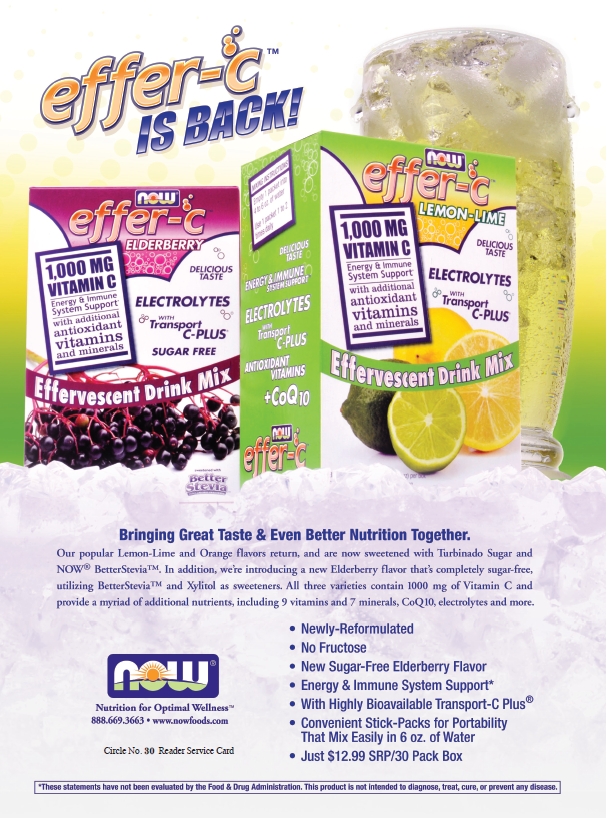 A powerful force in the antioxidants category are popular media outlets like The Dr. Oz Show, which very often strongly shapes shoppers’ perceptions of natural health aids. Retailers may have a love–hate relationship with this kind of press. On the one hand, backing by figures like Dr. Oz can turn a sleeper supplement into a rock star.
A powerful force in the antioxidants category are popular media outlets like The Dr. Oz Show, which very often strongly shapes shoppers’ perceptions of natural health aids. Retailers may have a love–hate relationship with this kind of press. On the one hand, backing by figures like Dr. Oz can turn a sleeper supplement into a rock star.
Alexis Harwood, brand director for Reserveage Organics, Gainesville, FL, calls this visibility “incredibly valuable,” especially for attracting shoppers that may not normally think to walk through your door. She states, “Dr. Oz reaches over four million viewers, many of which may not have considered using supplements to support health and wellness. I believe that the show creates new users and provides validation for the safety and efficacy of natural remedies.”
Likewise, this free press is welcomed by companies that sometimes have more heart than marketing budget. Ron Antriasian, director of sales and business development at Life Extension Precision Operations, Inc., Fort Lauderdale, FL, believes, “Any forum that raises awareness of the benefits of nutritional supplements in an objective and honest light is a positive not only for the industry, but also for the public. Dr. Oz is a respected voice with a massive audience, so his commentary is powerfully influential.”
But at the same time, popular media doesn’t always get the story right. If a supplement is intended to support healthy weight loss over time, but is painted as a quick way to squeeze into size two jeans, there’s a problem.
Thus, Melinda Schriver, vice president of business development for berry supplement maker Berries for Life, Fort Wayne, IN, feels it’s very important for such influential voices to have sound clinical evidence to support their statements. “If this assumption is correct, then whether they promote or demote a novel ingredient is a benefit to the industry. However, if they are making televised statements in the absence of solid due diligence on the supporting science, then this is not positive for the industry.” She feels the most important areas media should discuss are particular actives, standardizations and differences in potencies for ingredients.
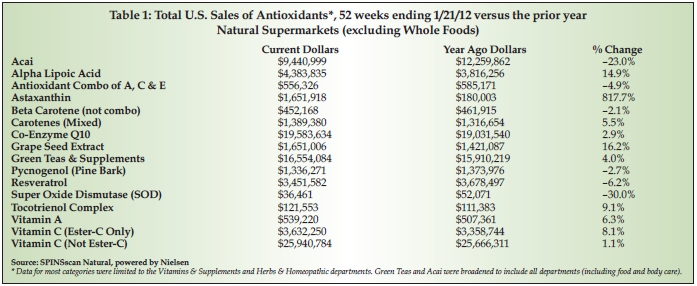
Great examples of a product mention gone well and one gone awry come from James Liu, president of Seabuck Wonders, Chicago, IL. He says having sea buckthorn featured on Dr. Oz gave the superfruit much attention and credibility in the United States. The result has been “tremendous demand” from consumers seeking out sea buckthorn products in stores.
But on the flip side, says Liu, “Acai was made huge on Dr. Oz and subsequently was abused by crafty marketers and small business schemes using Dr. Oz’s recommendation to their advantage.” The result was quite the opposite of the show’s original intention: lost credibility. “Consumers felt scammed by the 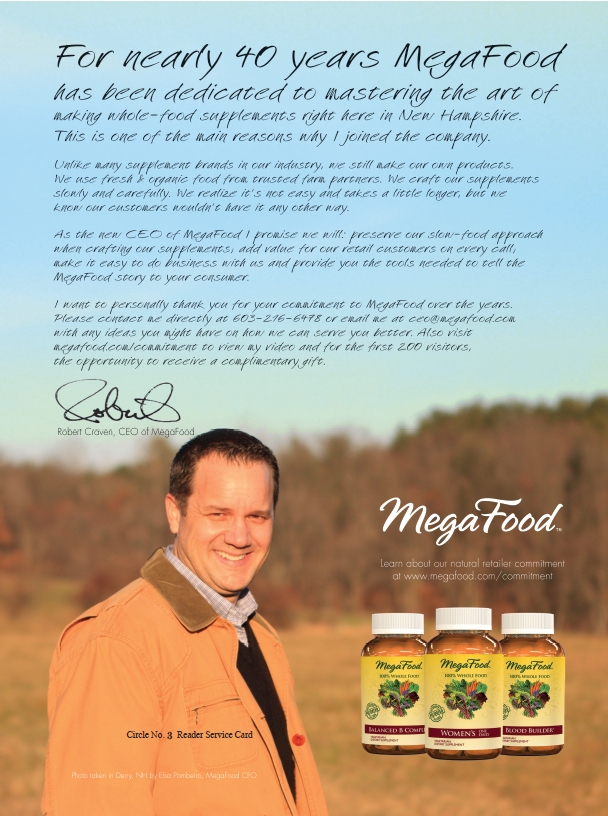 ingredient companies and their claims,” says Liu. “We don’t want that for sea buckthorn. It is not a weight-loss miracle supplement; it’s a weight-management supporting supplement. Its uses far outweigh simple weight loss and encompass complete health.”
ingredient companies and their claims,” says Liu. “We don’t want that for sea buckthorn. It is not a weight-loss miracle supplement; it’s a weight-management supporting supplement. Its uses far outweigh simple weight loss and encompass complete health.”
N. Kalyanam, Ph.D., president of research and development at East Windsor, NJ-based Sabinsa, makes the point that there’s also incomplete information disseminated at times. “His recent exposé, on spiked supplements could erode consumer confidence in dietary supplements. Retailers may want to monitor what he talks about and be ready to increase their orders. At the same time, like with any highly visible media report, they should monitor industry trade associations for tips on how to respond,” he feels.
Given all these factors, retailers and finished product makers should carefully consider how to keep up with newly popularized products. States Dallas Clouatre, Ph.D., consultant for R&D to Jarrow Formulas, Los Angeles, CA, “Supplement makers and retailers can get burned by bringing out products that are in demand for three months and then fade because there is no sustained drumbeat of publicity.”
Adds Schriver, “From our retailer contacts, we hear that the increased demand is short-lived, so retailers are wise to carefully manage their inventory of these recently mentioned ingredients or products until they see that the product has lasting consumer demand.”
Even though Dr. Oz and others can have a powerful, influential voice, Nichole De Block, marketing director for Nutraceuticals International Group, Paramus, NJ, reminds us that they are just one opinion. Though it can be a helpful view, she feels, “Everyone should do their own research and make their own judgments and not just base it off of one show or one man.”
Retailers, too, comprise a powerful voice that cannot be forgotten. “The public should be informed about the facts and benefits of dietary supplements so that they may make an informed decision for themselves. Retailers need to keep up on the science of nutrition and do all in their power to pass good information on to their customers,” Bruce McMullin, CEO and founder of Sibu Beauty, Midvale, UT.
1. Aroniaberry
 Some say the darker the better with berries. The reason why is that a helpful class of flavonoids, anthocyanins, are plentiful in darker berries like red currants, elderberries and blueberries. Add to this list the newly popular aroniaberry (also known as chokeberry), which is said to have some of the highest total anthocyanin concentrations among all berries (1,480 mg/100 g fresh weight) (1).
Some say the darker the better with berries. The reason why is that a helpful class of flavonoids, anthocyanins, are plentiful in darker berries like red currants, elderberries and blueberries. Add to this list the newly popular aroniaberry (also known as chokeberry), which is said to have some of the highest total anthocyanin concentrations among all berries (1,480 mg/100 g fresh weight) (1).
Schriver believes that this component is partly responsible for aroniaberry’s popularity among formulators, in addition to its high Oxygen Radical Absorbance Capacity (ORAC) value. This number is a measurement of an ingredient’s antioxidant activity in human tissue. “The current USDA Database for the ORAC of Selected Foods lists the total value for raw chokeberry (aroniaberry) at 16,062 mmol TE/100 g,” says Schriver. “Compared to other raw fruits and berries, the ORAC value for 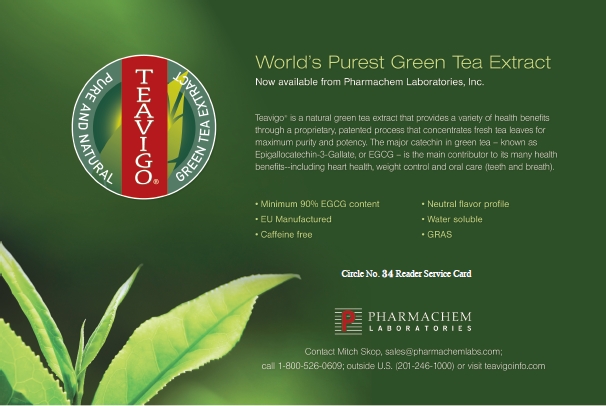 aroniaberry is roughly four times the value of pomegranates (4,479), three times blueberries (4,669) and red raspberries (5,065), 2.5 times blackberries (5,905), two times black currants (7,957) and 1.5 times cranberries (9,090) (USDA 2010).”
aroniaberry is roughly four times the value of pomegranates (4,479), three times blueberries (4,669) and red raspberries (5,065), 2.5 times blackberries (5,905), two times black currants (7,957) and 1.5 times cranberries (9,090) (USDA 2010).”
Also attractive to researchers and formulators are the berry’s documented health benefits. According to Schriver, these include heart, blood sugar, immune and digestive health. She states, “These benefits are largely correlated to the high antioxidant activity of aroniaberries. Formulators of supplements want to include this unique high-ORAC berry, and food and beverage formulators consider ORAC to be an important indicator of berry and juice quality.”
That said, Schriver believes that aroniaberry may not be the best ingredient for a formula 100% of the time. “The formulator’s decision about which berry to include should be based on what specific, tangible benefit is desired for the product being produced. Each berry species offers a unique anthocyanin profile with unique health benefits,” says Schriver.
For instance, aroniaberry for cardiovascular benefit; black currant for vision; blueberries for memory, cognition and motor function; or acai for being an exotic high-antioxidant berry, she states.
2. Maqui
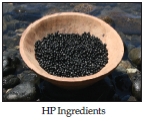 Just as anthocyanins are key to aroniaberry’s health benefits, they are also important for Chile-native maqui berry. Chris Kilham, medicine hunter, wrote last year after visiting Chile that the berries are sweet, delicious and high in antioxidants (2). He explains that the type of anthocyanin found in maqui, delphinidins, is present in extremely high amounts. “The delphinidins demonstrate potent anti-inflammatory activity, so they help to reduce the risk of a variety of degenerative diseases that involve inflammation,” he states.
Just as anthocyanins are key to aroniaberry’s health benefits, they are also important for Chile-native maqui berry. Chris Kilham, medicine hunter, wrote last year after visiting Chile that the berries are sweet, delicious and high in antioxidants (2). He explains that the type of anthocyanin found in maqui, delphinidins, is present in extremely high amounts. “The delphinidins demonstrate potent anti-inflammatory activity, so they help to reduce the risk of a variety of degenerative diseases that involve inflammation,” he states.
Annie Eng, president of HP Ingredients (a supplier of maqui berry), Bradenton, FL, says that maqui berry’s ORAC value is through the roof, and agrees with Kilham’s assessment of its anti-inflammation properties. She states, “It is a natural COX-2 Inhibitor. In vitro study has shown that maqui berry causes cell apotosis in colon cancer cells, and reduces COX-2 enzymes in human leukemia cancer cells.” In addition, she states that maqui berry helps “protect LDL from oxidation, and protect endothelial cells from intracellular oxidative stress.”
In addition to supplements, Eng feels it’s useful as a food ingredient, too, thanks to its neutral taste. She states, “It can be made into juices, smoothies, yogurt, salad dressing, jam or tea, just to name a few.”
3. Baobab
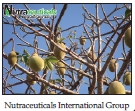 Also catching the eye of formulators is the powder from inside the hard-shelled fruit of the African baobab tree. This tangy fruit is said to have a flavor that is reminiscent of caramel, pear and grapefruit, but it’s not the taste alone that is drawing attention to this ingredient. States Stephan Broburg, general manager of Baobab Foods, Bellevue, WA, “Baobab’s multiple nutrients and exceptional levels of antioxidants combined with the fact they’re maintained in the fruit’s natural synergy is truly unique.” Its ORAC value, he states, is 140,000 units per 100-gram serving, according to the latest tests by Brunswick Labs.
Also catching the eye of formulators is the powder from inside the hard-shelled fruit of the African baobab tree. This tangy fruit is said to have a flavor that is reminiscent of caramel, pear and grapefruit, but it’s not the taste alone that is drawing attention to this ingredient. States Stephan Broburg, general manager of Baobab Foods, Bellevue, WA, “Baobab’s multiple nutrients and exceptional levels of antioxidants combined with the fact they’re maintained in the fruit’s natural synergy is truly unique.” Its ORAC value, he states, is 140,000 units per 100-gram serving, according to the latest tests by Brunswick Labs.
De Block speaks of her company’s trademarked baobab ingredient (Baozene) and notes that it has a 70% fiber content (much of it soluble fiber) and very high amounts of vitamin A, B, C, potassium, calcium, magnesium and iron.
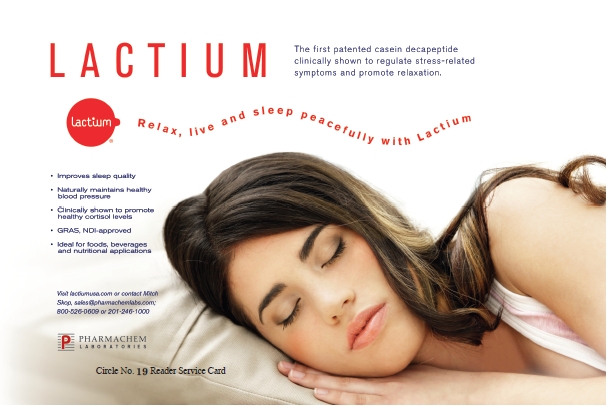 As a food ingredient, Broburg believes that it can be used as a raw, whole food that requires little processing. He states, “The fruit dries naturally within its pod and is simply milled and sieved into an edible powder. No pasteurization, heat extraction, freeze drying or added sugar is needed.”
As a food ingredient, Broburg believes that it can be used as a raw, whole food that requires little processing. He states, “The fruit dries naturally within its pod and is simply milled and sieved into an edible powder. No pasteurization, heat extraction, freeze drying or added sugar is needed.”
Topical skincare specialists love this ingredient, too, and Tom Havran, branded products developer at Norway, IA-based Aura Cacia, explains why: “Baobab has a rich silky texture, relatively neutral aroma and stabile composition, making it an ideal carrier for essential oils.” The result, he says, is a “long-lasting glide” that is great for massage and a nourishing, protective layer for dry skin.
Havran adds that baobab oil isn’t just antioxidant rich; it also offers “a balance of antioxidant essential fatty acids as well as saturated fatty acids that benefit healthy skin including: 36% oleic, 27% linoleic, 21% palmitic and 6% stearic acids.”
Those concerned about sustainability need not worry about baobab, our three experts say, all of whom say their company’s supply is sustainably harvested. Havran says the tree is common in Africa and on Madagascar. “Africans have been wild-harvesting the nuts as a food source and to extract the oil for millennia. Recently, this production has been organized into small village and women’s co-ops which have created economic opportunity. It doesn’t appear that the interest in baobab oil is resulting in any sustainability issues,” he explains.
And, Broburg says Baobab Foods’ supply is “harvested according to best-practice forestry techniques and there are ample supplies throughout southern Africa. In addition, a percentage of the fruit remains in local communities for local consumption.”
4. African Mango
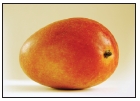 Some credit a spotlight on The Dr. Oz Show with the recent upsurge in popularity of African mango (Irvingia gabonensis). But, it is the fruit’s weight-loss support properties that keep shoppers coming back for more.
Some credit a spotlight on The Dr. Oz Show with the recent upsurge in popularity of African mango (Irvingia gabonensis). But, it is the fruit’s weight-loss support properties that keep shoppers coming back for more.
 According to Luke Huber, N.D., vice president of product innovation and scientific development at Life Extension Precision Operations, Inc., convincing studies demonstrate this effect. “Laboratory studies provided initial evidence that irvingia extract could inhibit fat cell growth by regulating the enzyme glycerol-3-phosphate dehydrogenase (G3PD) that helps convert sugar into fat,” he states. “Additional data suggested irvingia has beneficial effects on the hunger-suppressing hormone, leptin. It also increased levels of adiponectin, a hormone associated with insulin sensitivity.”
According to Luke Huber, N.D., vice president of product innovation and scientific development at Life Extension Precision Operations, Inc., convincing studies demonstrate this effect. “Laboratory studies provided initial evidence that irvingia extract could inhibit fat cell growth by regulating the enzyme glycerol-3-phosphate dehydrogenase (G3PD) that helps convert sugar into fat,” he states. “Additional data suggested irvingia has beneficial effects on the hunger-suppressing hormone, leptin. It also increased levels of adiponectin, a hormone associated with insulin sensitivity.”
De Block also believes irvingia is a good choice in the weight-loss category, especially since it has several mechanisms of action, which include metabolism support, satiety and cholesterol support.
Retailers may hear the name, IGOB131, mentioned in conjunction with African mango. According to Huber, tests confirm that this is one of the most effective Irvingia extracts, particularly for weight loss. A human clinical trial described by Huber tested IGOB131 against a placebo. Some 103 healthy overweight individuals took 150 mg of the extract before both lunch and dinner. “After 10 weeks, significant body weight, body fat and waist circumference improvements were observed in those taking the irvingia extract compared to the placebo group,” he says. Cholesterol levels were lower, too.
5. Sea Buckthorn
 Another superfruit with some amazing properties is sea buckthorn, which not only offers antioxidants, but also omegas. According to Liu, “It has omegas-3, -6, -9, and the rare omega-7, a naturally occurring fatty acid in the skin making it fantastic for skin care and beauty products.” Liu feels its 1:1 ratio of omega 3:6 is ideal for humans. In fact, McMullin believes the omega-7 content is one of the most attractive features of this superfruit.
Another superfruit with some amazing properties is sea buckthorn, which not only offers antioxidants, but also omegas. According to Liu, “It has omegas-3, -6, -9, and the rare omega-7, a naturally occurring fatty acid in the skin making it fantastic for skin care and beauty products.” Liu feels its 1:1 ratio of omega 3:6 is ideal for humans. In fact, McMullin believes the omega-7 content is one of the most attractive features of this superfruit.
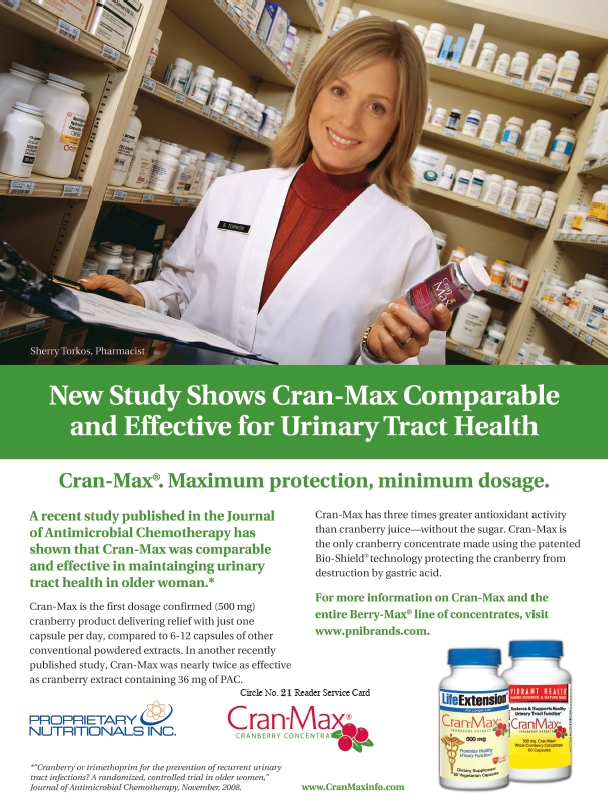 On the antioxidants front, sea buckthorn is packed with vitamins A, E, and C and other powerful antioxidants including superoxide dismatuse, says Liu.
On the antioxidants front, sea buckthorn is packed with vitamins A, E, and C and other powerful antioxidants including superoxide dismatuse, says Liu.
Research supports a broad range of uses for sea buckthorn, including immune health, heart health, gastrointestinal and liver support, skin health and more. Compared with other superfruits, Liu believes sea buckthorn, “outshines them all in total nutritional content as well as its strength of antioxidants.”
Sibu Beauty uses the turkistanika variety of sea buckthorn, which comes from the Himalayas. This shrub must deal with much stress from its cold, dry environment, and thus may have developed a unique chemical composition. “Scientists love the diversity of the plant and the wide array of applications it has on various aspects of health for humans and animals,” says McMullin. “Since Sibu uses the actual fruit in a natural form, when it is consumed, the body recognizes it as food and it is assimilated as food for maximum absorption and uptake into the organism.”
With regard to sustainability, McMullin feels the supply is substantial. “The vast majority of berries provide nutrition for Himalayan birds and the remaining berries are recycled into the soil. The sea buckthorn forests are protected by the government and are growing by 1–2% per year.”
Not many companies use sea buckthorn because it oxidizes quickly. “Most sea buckthorn sold on world markets is in a state of decomposition with a brownish color and a very flat taste,” says McMullin. Thus, it’s important that companies work with growers and suppliers to ensure a fresh, stable supply.
6. Resveratrol
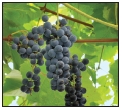 Resveratrol has been—and continues to be—a hot commodity in supplements aisles. Well-respected for its heart health and longevity benefits, researchers are continuing to uncover what makes this extract of grapes and Japanese knotweed tick. This is the heart of resveratrol’s appeal, Harwood explains, stating, “Its ability to influence longevity genes is truly what makes resveratrol so unique.”
Resveratrol has been—and continues to be—a hot commodity in supplements aisles. Well-respected for its heart health and longevity benefits, researchers are continuing to uncover what makes this extract of grapes and Japanese knotweed tick. This is the heart of resveratrol’s appeal, Harwood explains, stating, “Its ability to influence longevity genes is truly what makes resveratrol so unique.”
A recent study undertaken by the National Institutes of Health indicates that resveratrol may not directly activate the sirtuin 1 protein associated with aging, as once thought. Rather, it may inhibit the PDE4 protein, which sets off a cascade of cellular events that indirectly activates sirtuin 1 (see this month’s news story, page 8).
Says Harwood of the study, “This research, although preliminary, is very interesting. The main takeaway is that we are starting to discover exactly how longevity genes such as sirtuins are being activated, and the more we understand, the better we will become at enhancing existing technologies and improving formulations.”
Another new area of research for resveratrol is its ability to benefit conditions associated with metabolic syndrome, including obesity, blood sugar imbalance, insulin resistance and lipid abnormalities, Harwood feels.
7. Pterostilbene
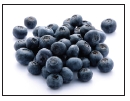 You may have noticed new formulas crop up with pterostilbene (pronounced terro-STILL-bean), a cousin of resveratrol. The pair can be extracted from the same source: grapes and the plant’s leaves and vines. Other sources include blueberries, cranberries, sparkleberries and lingonberries. Kalyanam of Sabinsa (supplier of Silbinol) believes the most practical source is the Indian Keno tree (Pterocarpus marsupium).
You may have noticed new formulas crop up with pterostilbene (pronounced terro-STILL-bean), a cousin of resveratrol. The pair can be extracted from the same source: grapes and the plant’s leaves and vines. Other sources include blueberries, cranberries, sparkleberries and lingonberries. Kalyanam of Sabinsa (supplier of Silbinol) believes the most practical source is the Indian Keno tree (Pterocarpus marsupium).
“Pterostilbene, like resveratrol, belongs to a class of compounds that are naturally produced by plants for self-protection when under attack by pathogens such as bacteria or fungi,” states Clouatre.
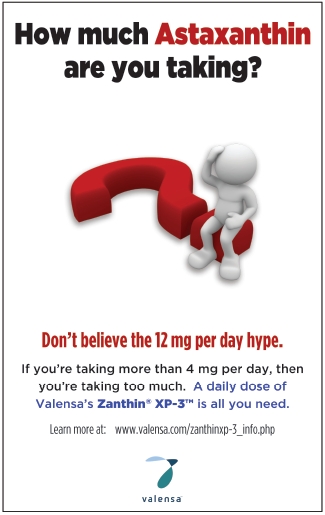 But there are some differences between pterostilbene (AKA dimethylresveratrol) and resveratrol despite the structural similarities. For instance, Kalyanam says, “Pterostilbene is a dimethylated analog and is a more lipophilic material than resveratrol.” Clouatre feels, “Pterostilbene is better absorbed from the gastrointestinal tract than is resveratrol, exhibits dramatically higher hepatic metabolic stability leading to much greater uptake into tissues and also exhibits greater membrane transport.”
But there are some differences between pterostilbene (AKA dimethylresveratrol) and resveratrol despite the structural similarities. For instance, Kalyanam says, “Pterostilbene is a dimethylated analog and is a more lipophilic material than resveratrol.” Clouatre feels, “Pterostilbene is better absorbed from the gastrointestinal tract than is resveratrol, exhibits dramatically higher hepatic metabolic stability leading to much greater uptake into tissues and also exhibits greater membrane transport.”
Kalyanam also believes, “The longer half-life of pterostilbene in blood has given rise to the notion that it may be more efficacious than resveratrol...Both are good antioxidants. In certain cancer models, pterostilbene surpasses resveratrol in anti-cancer activity. While this combination appears to be wise, more research is needed in this area.”
Formulators are interested in pterostilbene for many of the same reasons they like resveratrol: it benefits many symptoms associated with metabolic syndrome. “This means that benefits include improved general lipid metabolism, such as lower triglycerides, total cholesterol, LDL and VLDL under various conditions,” says Clouatre.
If all these health benefits were not enough to convince stores to carry pterostilbene supplements, there’s more. Clouatre says the way in which it promotes a healthy inflammatory response is impressive, that being lowering inflammation activators such as NF-kappaB. Another benefit is that it doesn’t take a lot of the ingredient to get the job done. Says Clouatre, “Pterostilbene can be expected to exert significant effects on memory starting at intakes of around 30 mg/day, although general antioxidant benefits can be found at lower intakes.”
8. Grape Seed Extract
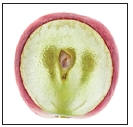 We have spoken of resveratrol and pterostilbene, and now we come to another grape component: grape seed extract. Benefiting many symptoms of metabolic syndrome, this extract is known for its heart health properties—especially blood pressure support. It also has been studied for eye health, as an anti-cancer agent (though more research is needed on this front) and as an inflammation aid. States Clouatre, “Grape seed extract is known to inhibit some the damage done to tissues by inflammatory actors such as collagenase as well as some of the standard mediators of inflammation.” Even in relatively small quantities, grape seed extract is said to instill its health benefits.
We have spoken of resveratrol and pterostilbene, and now we come to another grape component: grape seed extract. Benefiting many symptoms of metabolic syndrome, this extract is known for its heart health properties—especially blood pressure support. It also has been studied for eye health, as an anti-cancer agent (though more research is needed on this front) and as an inflammation aid. States Clouatre, “Grape seed extract is known to inhibit some the damage done to tissues by inflammatory actors such as collagenase as well as some of the standard mediators of inflammation.” Even in relatively small quantities, grape seed extract is said to instill its health benefits.
One stand-out aspect of grape seed extract is its oligomeric proanthocyanidin complex (OPC). Clouatre explains that OPC have many health properties like promoting longevity. He explains, “The OPC are powerful antioxidants, which act as cofactors to vitamin C. They have a special affinity for proteins and certain protein-building blocks, especially proline. In effect, OPC aid in the production and the crosslinking of collagen as it forms the collagen matrix, which underlies the health of the artery walls, the skin, cartilage and other collagen-based parts of the body.”
In addition, OPC inhibits enzymes that damage collagen and tissue (a contributor to inflammation), protects cholesterol from oxidative damage, reduces platelet aggregation and benefits the blood vessels, blood sugar and blood pressure, says Clouatre.
9. French Maritime Pine Bark
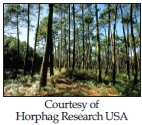 One of the most prolific areas of research deals with a branded French maritime pine bark extract (Pycnogenol, distributed in North America by Horphag Research USA, Hoboken, NJ). With hundreds of dedicated studies behind it, one can safely say that data support its use for numerous applications including heart health, eye support, healthy skin, blood sugar care, joint health and more.
One of the most prolific areas of research deals with a branded French maritime pine bark extract (Pycnogenol, distributed in North America by Horphag Research USA, Hoboken, NJ). With hundreds of dedicated studies behind it, one can safely say that data support its use for numerous applications including heart health, eye support, healthy skin, blood sugar care, joint health and more.
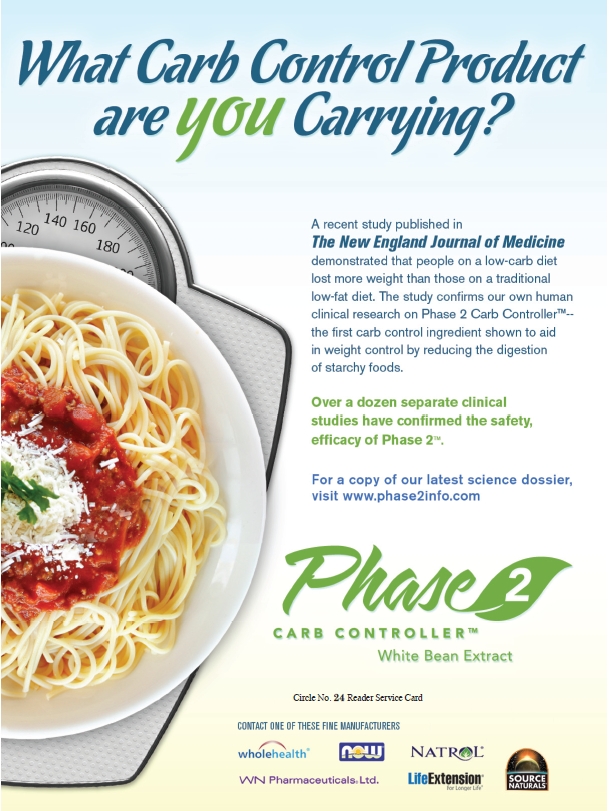 Many of these areas are in some way linked to oxidative stress. Says Frank Schönlau, Ph.D., scientific director at Horphag Research, “The physiologic imbalance leads to greater oxidative stress that
Many of these areas are in some way linked to oxidative stress. Says Frank Schönlau, Ph.D., scientific director at Horphag Research, “The physiologic imbalance leads to greater oxidative stress that
generates further damage, creating a vicious cycle. It is becoming increasingly clear that continuous oxidative stress has pro-inflammatory effects, which, in turn, generates greater oxidative stress.”
He points out that new research is less interested in test tube experiments (such as ORAC value). “Now, we are seeing a renaissance of antioxidant research in clinical studies,” says Schönlau.
Researchers are looking at “validated parameters” that indicate oxidative stress in humans. An example of such biomarkers are F2-isoprostane metabolites, which develop from oxidized unsaturated fats in the body. States Schönlau, “Pycnogenol has been demonstrated to lower F2-isoprostane levels in double-blind, placebo-controlled trials on cognitive function in elderly citizens in Australia as well as in patients in Switzerland who previously suffered a heart attack. Researchers have instruments at their disposal for testing the oxidative stress from as little as a drop of blood from the fingertips. In many clinical trials with Pycnogenol, the evaluation of capillary blood oxidative stress values is routinely monitored.”
According to information on www.pycnogenol.com, this extract has four main properties: “it’s a powerful antioxidant, acts as a natural anti-inflammatory, selectively binds to collagen and elastin and, finally, it aids in the production of endothelial nitric oxide which helps to vasodilate blood vessels.”
10. Cocoa
 Cocoa for health support may seem like a novel idea to some shoppers, but it has centuries of historical support and increased backing from modern research.
Cocoa for health support may seem like a novel idea to some shoppers, but it has centuries of historical support and increased backing from modern research.
Researchers may already connect cocoa with heart health. This antioxidant, says Harwood, is one of nature’s richest sources of phytochemicals called flavanols, “which have been shown to protect blood vessels, increase circulation and maintain healthy blood pressure. Formulators also love the fact that cocoa has energizing and mood-boosting properties.”
Of all the newest research, one of the most exciting to Harwood is recent data showing that “cocoa flavanols are quite possibly the most powerful heart healthy polyphenols we can ingest on a daily basis.” Part of the reason why is that it supports healthy blood pressure and blood vessels.
In fact, two studies from Harvard support these applications. In one, published in the Journal of Nutrition, a study involving 2,575 people indicated cocoa helped decrease blood pressure, improve blood vessel health and improve cholesterol. Regarding the latter, LDL cholesterol decreased while HDL increased in those under 50. Another from the American Journal of Clinical Nutrition linked cocoa with improved vascular function.
11. Lycopene
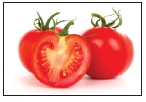 The carotenoid lycopene, found most notably in tomatoes, is often included in men’s health supplements. The reason why is that this nutrient (which can only come from food sources) is highly concentrated in the prostate gland in men (it’s also found in the mammary tissue of women). Initial research found that with more lycopene in a man’s system, levels of prostate-specific antigen (PSA) in the bloodstream go down. A high PSA lev
The carotenoid lycopene, found most notably in tomatoes, is often included in men’s health supplements. The reason why is that this nutrient (which can only come from food sources) is highly concentrated in the prostate gland in men (it’s also found in the mammary tissue of women). Initial research found that with more lycopene in a man’s system, levels of prostate-specific antigen (PSA) in the bloodstream go down. A high PSA lev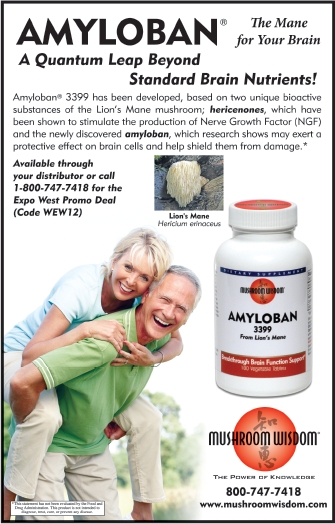 el is a sign of an enlarged prostate gland.
el is a sign of an enlarged prostate gland.
Some of the original studies on lycopene, says Scott Larkin, vice president of sales and marketing of Lycored, Orange, NJ, were done by Omer Kucuk, M.D., from the Karmanos Cancer Institute in Detroit on prostate cancer. His group measured the amount of lycopene in men who were diagnosed with prostate cancer and scheduled for prostatectomies. Also noted were PSA levels and the size of prostate tumors for 30 days. The men were also given 250 mg of Lyc-O-Mato (Lycored’s brand) twice daily. At the end of the study, tumors were smaller and PSA levels were diminished.
New research deals with cardiovascular health and hypertension, according to Larkin. “Basically, it showed taking Lyc-O-Mato lowered blood pressure in mild hypertensive people as well as pharmaceutical drugs,” he states. Thus, the ingredient is “excellent for cardiovascular health and the elasticity of the blood vessels.” Part of the reason why is that the antioxidant supports healthy inflammation in the body.
Additionally, skin health is a new application of lycopene. “Systemically, if you take carotenoids like lyopene, it helps mitigate damage to the skin,” says Larkin. “Two of the studies we did showed taking lycopene systemically can reduce the negative effects of ultraviolet radiation from the sun by 40–50% by protecting the skin from sun damage.”
12. Lutein, 13. Zeaxanthin

Despite lutein’s long history in the natural channel, it has only recently been making a splash in conventional lines for vision support. This nutrient and fellow eye-health ingredient zeaxanthin are critical for optimal vision. According to Alex Fink, marketing director of human nutrition and health at Kemin (maker of FloraGLO), Des Moines, IA, few Americans get what they need from their diets. “Nearly one in two U.S. adults has low levels of lutein and zeaxanthin in their eyes leaving them unprotected,” he states. “Your body doesn’t make lutein and zeaxanthin and it is difficult to get these nutrients from diet alone; the average daily American diet only provides about 2 mg.” The answer, he believes is taking 10 mg of supplemental lutein and 2 mg of zeaxanthin.
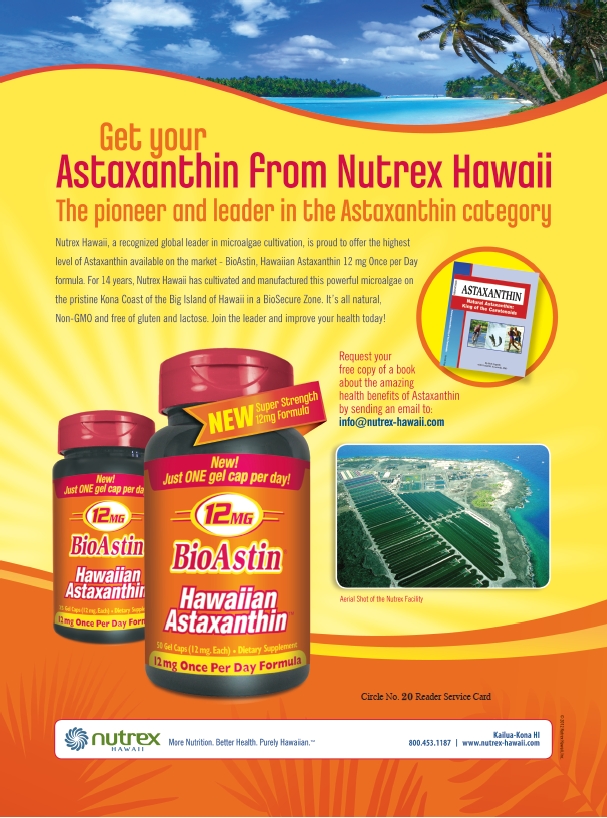 The lutein in most vitamins is derived from marigold flower petals, where it is present in a modified form (esterified through the hydroxyl groups with fat molecules, according to Fink). This type of lutein is technically lutein esters or lutein from esters. Fink says his company takes the extra step of converting the ester form to “free” lutein. Fink states, “Free lutein is the form that is predominant in the human diet and is the form that is absorbed and deposited into human tissue like the macula.”
The lutein in most vitamins is derived from marigold flower petals, where it is present in a modified form (esterified through the hydroxyl groups with fat molecules, according to Fink). This type of lutein is technically lutein esters or lutein from esters. Fink says his company takes the extra step of converting the ester form to “free” lutein. Fink states, “Free lutein is the form that is predominant in the human diet and is the form that is absorbed and deposited into human tissue like the macula.”
Even those with 20/20 vision will experience improved vision with proper levels of lutein and zeaxanthin, Fink believes. Lutein and zeaxanthin are powerful antioxidants that “work like internal sunglasses absorbing damaging light we are exposed to every day,” he says.
They also help reduce the risk of certain age-related eye problems (like cataracts and macular degeneration) and reduce the time the eyes need to recover from sun glare. The latter is somewhat of a new application that Fink believes has some promising research backing. Researchers from the University of Georgia found that supplementing with 10 mg lutein and 2 mg of zeaxanthin daily offered improved glare relief. “After six months, those taking the supplements could, on average, withstand a much higher intensity of glaring light and still see a central target...this is known as veiling glare threshold. They also saw that it decreased photostress recovery time, which is the amount of time it takes to recover from bright light being shown directly in one’s eyes,” Fink explains.
Also new in the lutein research arena are tests that can measure the amount of lutein in the macula by measuring how much blue light it absorbs. This is related to lutein since the nutrient absorbs blue light.
Lutein and zeaxanthin are not just about the eyes; they also support cognitive and skin health, according to Fink. It’s also noteworthy that zeaxanthin is from the sub-family xanthophylls, some of which have some interesting properties. “For example, these carotenoids can cross the blood brain barrier to protect the brain. Once in the brain, they can cross the blood retinal barrier and protect the eyes. Some excellent carotenoids can’t do this,” states Bob Capelli, vice president sales and marketing, Cyanotech Corporation, Kailua-Kona, HI.
14. Astaxanthin
Like zeaxanthin, astaxanthin belongs to the xanthophyll family. Found in  freshwater algae (Haematococcus pluvialis), scores of research articles show that astaxanthin benefits many aspects of health. Says Joe Kuncewitch, national sales manager at Fuji Health Science (supplier of AstaREAL Astaxanthin), Burlington, NJ, “Some of the areas we have studied are eye fatigue improvement, skin health, muscle endurance and improved muscle recovery and cardiovascular benefit, specifically supporting healthy blood lipids.”
freshwater algae (Haematococcus pluvialis), scores of research articles show that astaxanthin benefits many aspects of health. Says Joe Kuncewitch, national sales manager at Fuji Health Science (supplier of AstaREAL Astaxanthin), Burlington, NJ, “Some of the areas we have studied are eye fatigue improvement, skin health, muscle endurance and improved muscle recovery and cardiovascular benefit, specifically supporting healthy blood lipids.”
Capelli adds that astaxanthin has other unique properties that make it useful in joint and tendon health, immune support, neuroprotection and for athletes.
Given its relationship to zeaxanthin it isn’t surprising that companies like Fuji have sponsored several human clinical trials on its eye health properties. With 10 studies on astaxanthin for the relief of eye fatigue due to computers, smartphones, video games and the like, “This is our strongest area of research if you are counting by the numbers,” says Kuncewitch. “I think we’re just now learning how beneficial astaxanthin is as an antioxidant and certainly Fuji will be at the forefront of research and development of this valuable carotenoid for many years to come.”
15. Curcumin
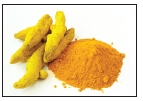 Curcumin is the main curcuminoid in turmeric and has many anti-inflammatory benefits that have attracted researchers of late. One way it may accomplish this is by inhibiting PLA2, COX-2, and 5-LOX activities (3). Thus, curcumin has found a steady place in joint-support and other formulas.
Curcumin is the main curcuminoid in turmeric and has many anti-inflammatory benefits that have attracted researchers of late. One way it may accomplish this is by inhibiting PLA2, COX-2, and 5-LOX activities (3). Thus, curcumin has found a steady place in joint-support and other formulas.
According to Kalyanam, one area of specific interest has been the anti-cancer properties of curcumin. “Researchers have speculated that the lower incidence of cancer in the Indian sub-continent compared with other countries in the world might be linked to higher consumption of curcuminoids in the Indian food,” he states.
The Linus Pauling Institute explains that curcumin may induce apoptosis in cultured cancer cells and it inhibited cancer in animal trials (oral, stomach, liver and colon cancers) (3). Research teams are starting to branch out to human studies, too. While these studies are promising, one cannot recommend curcumin as a cancer treatment.
Another burgeoning area of research links curcumin and cognitive support. One recent study found that the combination of curcumin and vitamin D triggered the immune system to purge amyloid beta from the brain. This plaque is said to be a hallmark of Alzheimer’s disease (4). WF
References
1. B.L. Minton, “Grow Your Own Antioxidants with Aronia Berry Bushes,” www.naturalnews.com/026263_aronia_berries_berry.html#ixzz1n9KT3SM9, accessed Feb. 22, 2012.
2. C. Kilham, “Maqui Berry: The Newest Superfruit,” www.foxnews.com/health/2011/01/26/marvelous-maqui-berry, accessed Feb. 23, 2012.
3. Linus Pauling Institute, “Curcumin,” http://lpi.oregonstate.edu/infocenter/phytochemicals/curcumin, accessed Feb. 24, 2012.
4. “Vitamin D, Curcumin May Help Clear Amyloid Plaques Found In Alzheimer’s Disease,” www.sciencedaily.com/releases/2009/07/090715131558.htm, accessed Feb. 24, 2012.
Published in WholeFoods Magazine, April 2012










